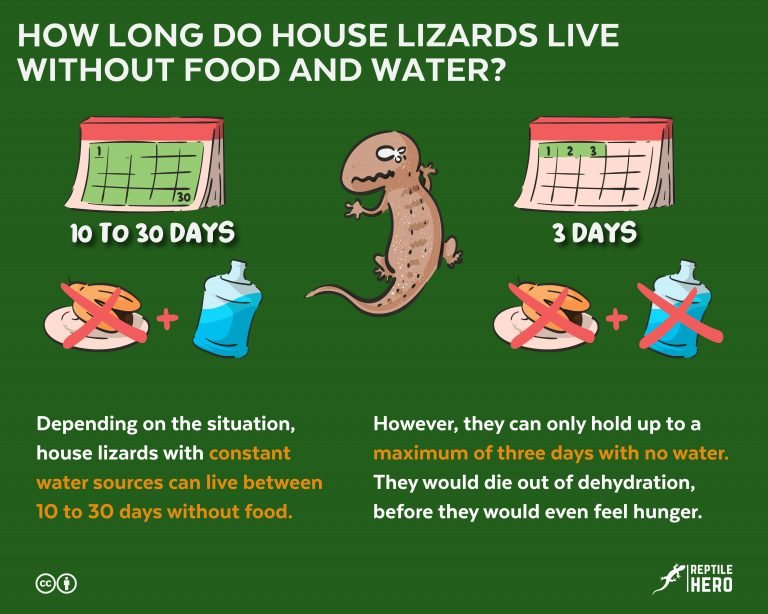Can Your House Lizard Eat Spiders and Cockroaches?
Spiders and cockroaches aren’t the most welcome creatures in many homes, for a lot of health and safety-related reasons. With this, it can be worrisome if you find a lizard munching on either one of them.
House lizards will tend to hunt and eat spiders and cockroaches. Their success depends on the size of both the lizard and the insect. However, for pet lizards it is not generally recommended to eat such insects, especially if found in the wild. It is possible for lizards to become ill if the prey was carrying harmful chemicals, parasites, diseases, and natural poison.
Continue reading as I explain this further.
Are Spiders and Cockroaches Bad For Lizards?
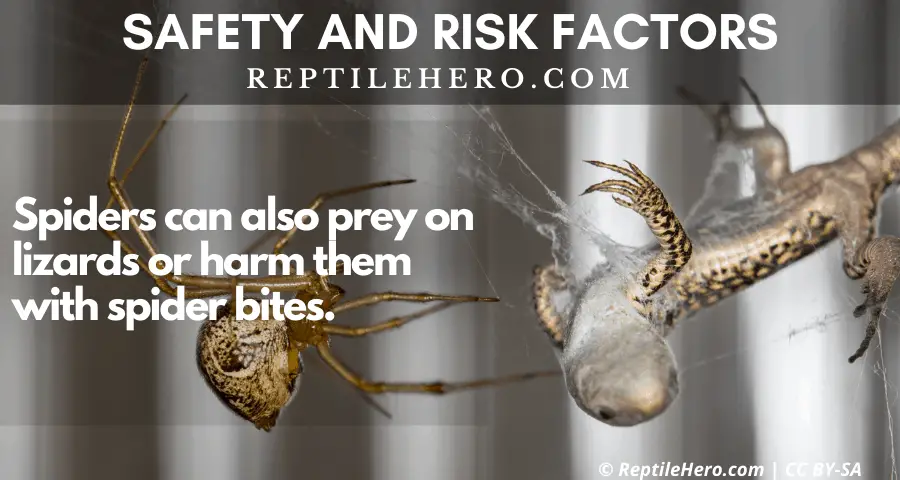
Not all lizards can eat spiders and cockroaches. It depends on the type of lizard and their respective size. For instance, the house gecko might struggle to eat a large size cockroach such as the Parcoblatta or the American type. They can only handle small and young cockroaches (so called nymph). However, a Tokay Gecko (this will more likely be a pet) can handle cockroaches way larger than its size.
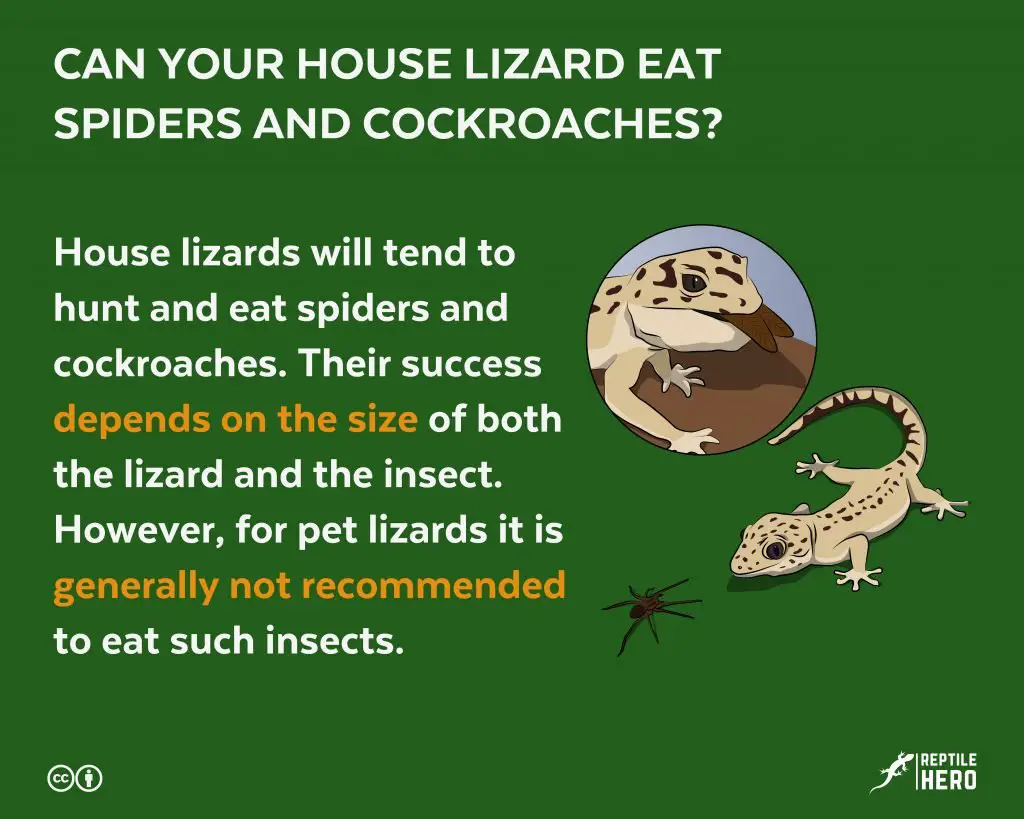
Another fascinating thing that many videos of other lizard owners show is the tendency of house lizards and geckos to attack spiders and cockroaches, despite their size. Here is an example:
The thing is, lizards in general still need to be fed servings that, as a general rule of thumb, are no larger than the space between their eyes. Adult lizards may be equipped with teeth that can help them in chomping and breaking down the bodies of bigger insects, but considering the size of the prey that they may be trying to eat, their teeth seem better designed to help them grip these prey instead of breaking them into pieces.
The earlier video of a lizard attacking a cockroach, for example, shows that it still struggles with the cockroach in its mouth compared to this larger gecko that smoothly attacked a relatively smaller roach:
It does indeed make sense for lizards to attack and catch larger prey, but their success in completely devouring them, at least all in one gulp, is very unlikely. They may still bite off a head or a limb, though, just like this little guy:
If they force themselves to eat this much or this big, the lizard may choke on the large chunks, vomit undigested parts, or be impacted as some bits are blocking its digestive tract.
Another thing to consider is how clean and safe these wild catches are. The benefit in buying feeders from trusted stores and breeders as well as starting to breed your own colony of crickets, worms, and roaches is that doing so helps you ensure that these insects are not carrying any parasites or diseases that may infect your lizard.
With roaches and spiders that did not go through this same preparation, you have no way of gut-loading them or figuring out if they ate anything infectious or unsanitary beforehand. Aside from this, these creatures may also be coated in insecticides and other poisonous chemicals that they may already be dying from, or in the case of cockroaches, are developing a resistance to. This is even worse. Indeed, cockroaches might have ingested poison that is not affecting them, but that can seriously affect your gecko.
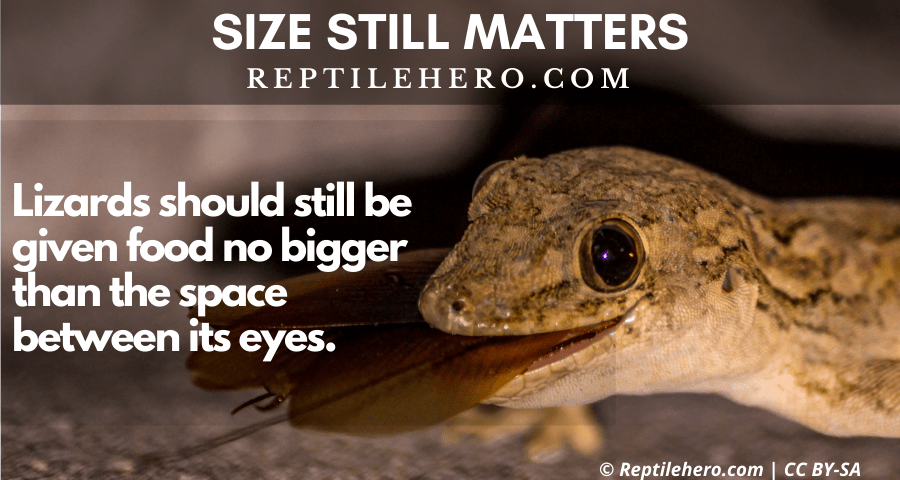
The dosages of insecticide that lizards may get from eating these creatures may arguably be low and tolerable, but research shows that reptiles and amphibians are sensitive organochlorine (OC) insecticides, and it would still be safer to not expose them to similar chemicals, especially if these lizards are smaller in size and may be affected faster by low dosages.
Lastly, there is also a certain risk in exposing lizards to spiders because there are spider species that can also harm lizards back. While smaller spiders are usually hunted by lizards, there have been observations where some spiders species (such as the regal jumping spiders) were able to attack and eat lizards that were three times their size.
There is also the concern of whether or not you would be dealing with a venomous spider. Venomous spiders may not be harmful to lizards as they eat them, but fighting with such spiders might expose them to potential spider bites, which can cause allergic or lethal reactions in them.
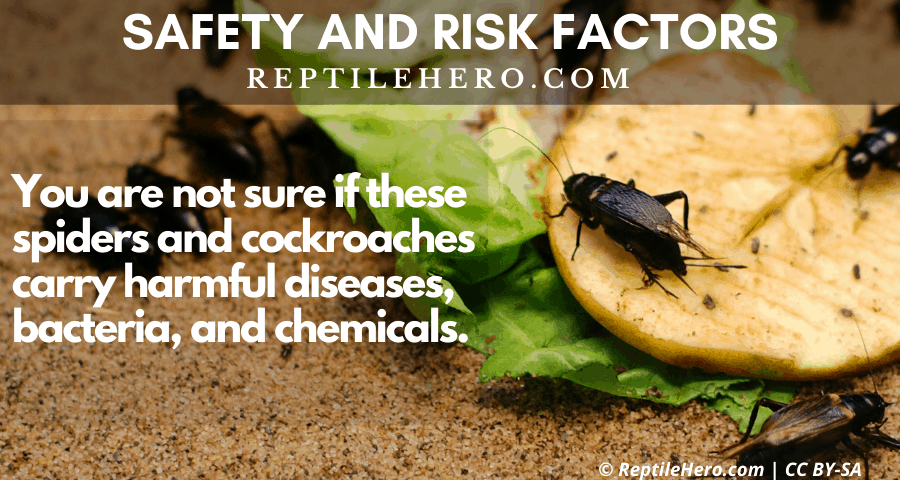
In the same way, there may be instances when you find small spiders that have found their way inside newly bought feeders or hiding inside your lizard’s tank. As a precautionary measure, it would be wiser to get rid of these spiders and replace any feeders that may have been eaten or poisoned by any spider.
With all these factors considered, it is still safest to not allow pet lizards to eat these wild spiders and cockroaches.
If ever you did find your lizard eating one of these creatures, it is still possible for them to be completely fine, but you may need to observe them after they have eaten. Look out for any signs of indigestion, poisoning, and illness in general. These could be a lack of appetite, unusual consistency and frequency of droppings, lethargy, weight loss, or sunken eyes, to name just a few. Should you see any of these signs, contact a trusted vet or breeder that can help with needed aid and medication, especially if there are signs of poisoning or infections.
How To Get Rid Of Cockroaches and Spiders?
Can you use gecko to get rid of a cockroaches infestation?
Geckos and house lizards cannot solve a cockroach infestation in a house. Geckos will likely die from cockroach poison if it was already used as a first containing measure and they will not be able to contain an infestation. A gecko cannot eat fast enough to compensate for a cockroach infestation. Moreover, the risk for a cockroach to transmit slamonelal to a gecko and then to a human are quite high.
The only way this can work is to have an infestation of gecko. But tihs, once the cockroaches are gone, will prose a second problem (the geckos). So this is not a viable option.
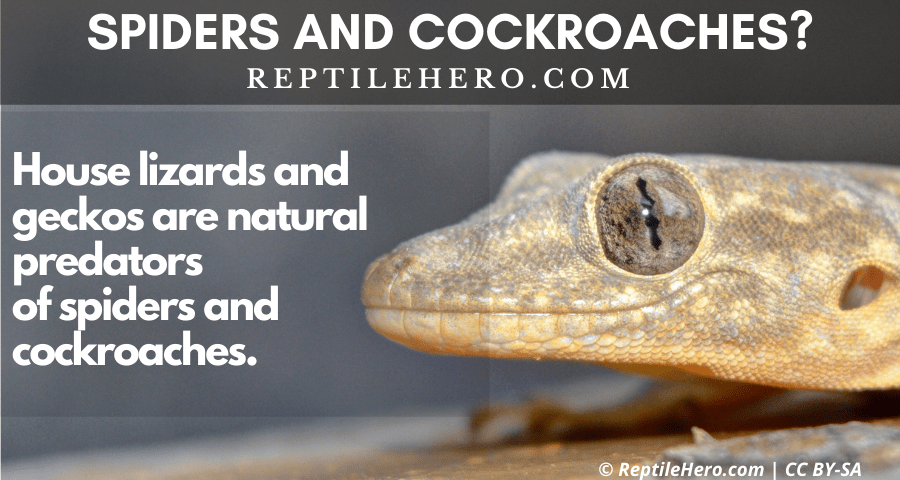
It would be better to consider Integrated Pest Management (IPM) to help get rid of them in the least toxic way possible. In general, you can stop and prevent pests from further invading your home by maintaining a clean space, getting rid of any source of food, moisture, and shelter for these creatures:
- Clean up spills and food waste and do not leave unwashed plates and utensils
- Check windows for cracks and openings that allow pests to enter your home
- Properly store and seal food to prevent them from attracting pests
- Regularly throw out the trash and clean the containers
Insecticides may still be necessary and for severe cases, you may need to call pest control. Before opting for this method, first consider its health hazards to both you and your pet lizard. Some tips are as follows:
- Always check the labeling on pesticides to see if there are important instructions related to minimizing pet exposure
- Move your pets away from the area that you will be treating. Also remove any equipment, toys, food storage, etc.
- For tanks that cannot be moved, consider covering them during the application
Takeaways
- Lizards are natural predators to spiders and cockroaches, but their ability to eat these prey depends on their size.
- While it is possible for lizards to safely hunt these creatures, it is still important to watch out for any signs of indigestion, poisoning, and illness in them after eating.
- It is safer to avoid feeding wild pests to lizards as there is no way of knowing whether they are clean for the lizard or not.

![Homemade Crested Gecko Food [10 Recipes]](https://www.reptilehero.com/wp-content/uploads/2021/05/G47-768x614.jpg)
![Is It Possible To Overfeed A Gecko? [4 Signs]](https://www.reptilehero.com/wp-content/uploads/2021/12/overfed-gecko-cc-768x614.jpg)
![What Do Dwarf Geckos Eat? [With Examples + 6 Things To Remember]](https://www.reptilehero.com/wp-content/uploads/2021/12/dwarf-gecko-eats-cc-768x614.jpg)

![Picky Eater Leopard Geckos – How To Feed it [8 Solutions]](https://www.reptilehero.com/wp-content/uploads/2021/12/picky-eater-gecko-cc-768x614.jpg)
